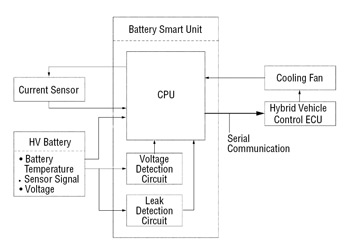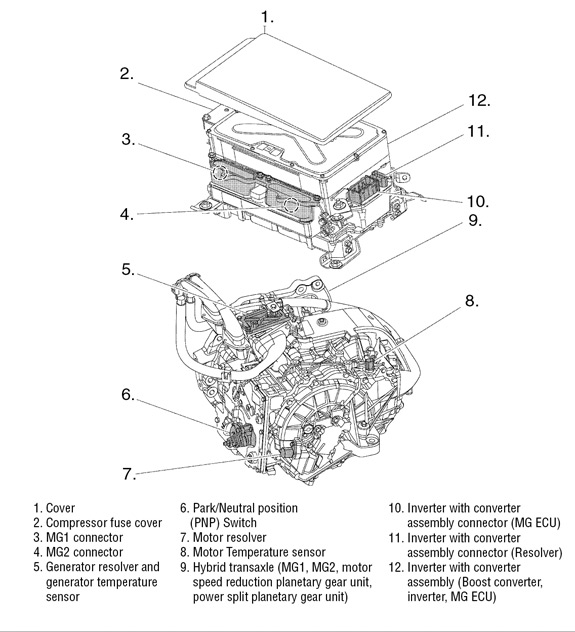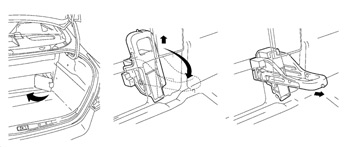When it comes to hybrids, the Toyota Prius gets most of the attention because it is the most common hybrid on the road. But we’ve already covered basic hybrid service on the Prius (see June and July 2007 issues of ImportCar), so in this article we’re going to take a look at the Nissan Altima Hybrid.
 The hybrid version of the Nissan Altima was introduced in 2007, but only as a limited production model (about 40,000 cars a year). Unlike the Prius, the Altima is not a purpose-built hybrid car but a hybridized version of a regular production vehicle (similar to what Honda did with its hybrid version of the Civic). The car has no external clues other than a hybrid badge to set it apart from the standard models.
The hybrid version of the Nissan Altima was introduced in 2007, but only as a limited production model (about 40,000 cars a year). Unlike the Prius, the Altima is not a purpose-built hybrid car but a hybridized version of a regular production vehicle (similar to what Honda did with its hybrid version of the Civic). The car has no external clues other than a hybrid badge to set it apart from the standard models.
The Altima’s mileage is about 35 mpg city and 33 mpg highway, which is better than the 23/31 rating of the standard Altima, but not as good as the Prius. But the Altima hybrid has a curb weight of 3,470 lbs., which is 300 lbs. more than the regular model, and 570 lbs. more than the third-generation 2004-’09 Prius.
SHARED TECHNOLOGY
Underneath the Altima’s outer skin, there’s a big surprise. The hybrid system in the Altima is essentially Toyota’s Synergy Drive adapted to Nissan’s QR25DE 2.5L DOHC 16-valve 4-cylinder engine. The high- voltage 244.8-volt hybrid battery, hybrid control system and hybrid electric drive are all nearly identical to that used in the Toyota Prius and Highlander hybrid, Lexus RX400h and LS600h, and Ford Escape hybrid (which also licenses its hybrid technology from Toyota).
So why would Nissan use Toyota’s hybrid drive system in the Altima? Licensing the technology from Toyota was a shortcut to getting a production vehicle on the road sooner, and with a proven hybrid system that works. Paying Toyota a fee to use its hybrid drive system saved a tremendous amount of R&D time and cost for Nissan. It also meant the car could go into production with minimal development time, though its production volume would be limited by the availability of component parts and batteries from Toyota’s suppliers (which has been a bottleneck in producing hybrids in large numbers).
 Currently, the Nissan Altima Hybrid is available only in California, New York, Massachusetts, Connecticut, Vermont, Oregon, Rhode Island, Maine and New Jersey.
Currently, the Nissan Altima Hybrid is available only in California, New York, Massachusetts, Connecticut, Vermont, Oregon, Rhode Island, Maine and New Jersey.
HOW IT WORKS
The basic operation of Nissan’s hybrid system in the Altima is the same as that in the Prius. It is a full hybrid with a pure electric mode when the vehicle starts to move.
The heart of the hybrid system is the transmission, which on the Altima is an electronically controlled eCVT (Continuously Variable Transmission). Inside are also two electric AC motors (MG1 and MG2). The MG1 motor is used to start the engine and serves primarily as a generator to recharge the 244.8-volt Nickel-Metal Hydride (Ni-MH) hybrid battery (located behind the rear seat). Regenerative braking is also routed through the MG1 engine when the brakes are applied to extend battery range.
 The MG2 motor is the primary drive motor that propels the vehicle when it is in full electric mode. It is a permanent-magnet AC synchronous electric motor, rated at 199 lb.-ft. of torque from 0 to 1,500 rpm (105 kW @ 4,500 rpm). During decel and braking, the MG2 motor also acts as a generator to recapture energy and extend the range of the hybrid battery. When backing up, the MG2 motor runs backward and the gasoline engine is off.
The MG2 motor is the primary drive motor that propels the vehicle when it is in full electric mode. It is a permanent-magnet AC synchronous electric motor, rated at 199 lb.-ft. of torque from 0 to 1,500 rpm (105 kW @ 4,500 rpm). During decel and braking, the MG2 motor also acts as a generator to recapture energy and extend the range of the hybrid battery. When backing up, the MG2 motor runs backward and the gasoline engine is off.
Understanding how the two electric motors work together in various driving modes is the key to understanding how the Hybrid Synergy Drive system works. Essentially, the transmission uses planetary gears to control the flow of power between the gasoline engine and the two electrical motors.





